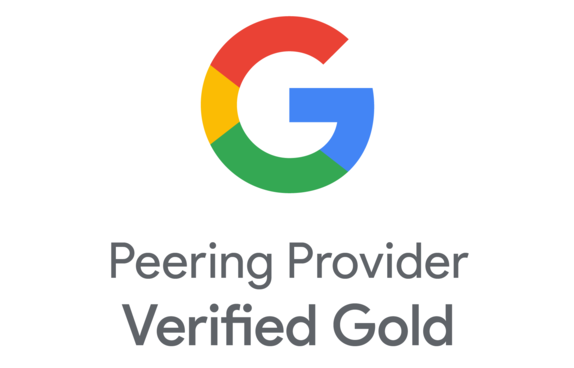For businesses leveraging Google's services, whether it is SaaS like Google Workspace, PaaS like Firebase, or IaaS like Virtual Private Cloud (VPC), having the right connectivity solution is critical. Here are different ways you can connect to Google to suit your specific needs and requirements.
1. Public Internet
The most straightforward way to connect to Google is via the public Internet. This method allows you to access all of Google’s services, from Gmail to Google Cloud, over your Internet Service Provider (ISP). While this is easy to set-up and cost-effective, it has limitations like unpredictable performance due to congestion, increased latency, and lack of guaranteed security.
Public internet connections are suitable for smaller businesses or for non-critical applications where performance and security are not primary concerns.
2. Direct peering with Google
Private peering enables networks to connect directly with Google (AS15169) via a dedicated private network interconnect (PNI), usually at a shared colocation facility. Building and operating direct peering connectivity without the necessary expertise or resources can be frustrating as this option is designed for networks with high volumes of traffic to Google services.
Many Google customers are not interested or prepared to manage complex direct peering connections, or do not meet the requirements to do so as Google has a selective peering policy.
3. Peering with a Google Verified Peering Provider (VPP)
As part of their effort to simplify peering operations, to increase routing security, and improve the experience for cloud customers, Google has changed its peering policy and peering requirements. Google recommends customers to use a Verified Peering Provider instead of direct peering. This option is also available for networks who do not meet Google’s peering requirements and leaves the complexities of peering arrangements to a Google Verified Peering Provider.
DE-CIX is a Google Verified Peering Provider – the first IX globally and verified at the gold level allowing you to maintain connectivity with Google on our route servers even if public peering is decommissioned.
For businesses that rely heavily on Google’s public services like Google Workspace, or public Google APIs, using a Google Verified Peering Provider delivers a significant performance upgrade by offering optimized routing to Google’s network – and is more affordable compared to private connectivity alternatives. This option is ideal for organizations that need a diverse and highly available connectivity to Google’s global network.
4. Google Cloud Partner Interconnect
For businesses needing private connectivity to Google Cloud resources, Partner Interconnect offers a scalable and secure solution. With Partner Interconnect, certified third-party providers like DE-CIX, facilitate the connection from your on-premises network to Google Cloud.
Connecting to Google Cloud via DE-CIX offers flexible bandwidth options and is quick to set up via our portal or API. This option is excellent for businesses with workloads on Google Cloud who require improved performance and security which public Internet connections cannot offer.
The best connectivity solution to Google depends on your specific business needs and technical requirements. No matter your choice, understanding your use case and workload requirements is key to building a robust infrastructure. The right connection empowers your organization to optimize operations, enhance user experiences, and unlock the full potential of Google’s services.
